Kallidus Suite integration
Company
Kallidus are a B2B SaaS provider in the HR and Learning & Development space, that aim to unleash the potential in people through the use of their recruitment, learning and performance software.
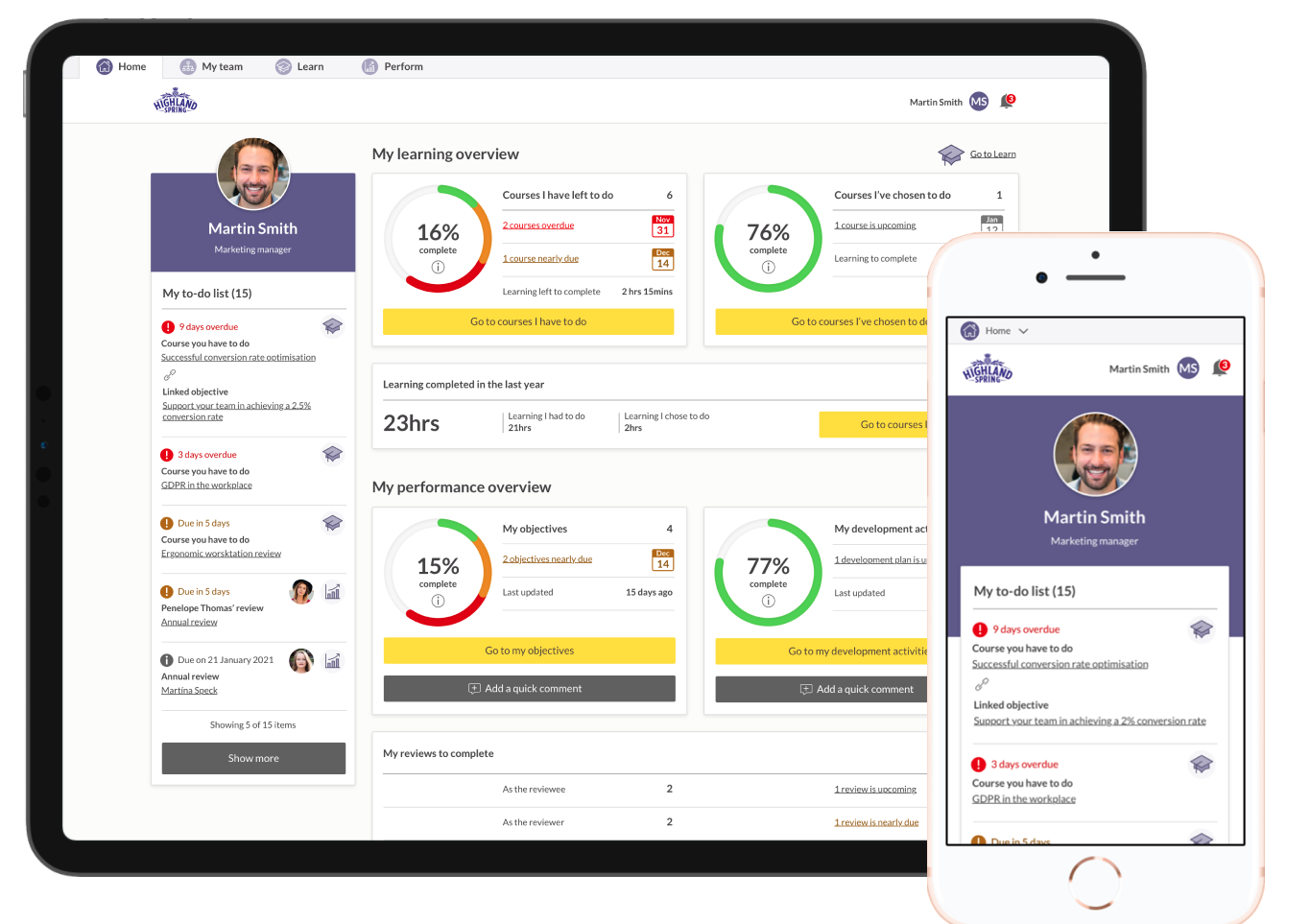
Kallidus Suite
My role
Lead UX designer
The team
Through the various phases of strategic planning and design work there have been many key stakeholders from the business including the directors. I worked closely with other members of the UX design team to ensure the ‘suite solution’ would work with where the individual products were headed. There was collaboration with key technical stakeholders throughout to ensure feasibility of solutions as well as product owners.
My responsibilities
- UX strategy and planning
- User research
- Collaborative workshop facilitation
- Stakeholder management
- Wireframing and prototyping
- User testing
The challenge
Kallidus have grown over the years both through organic growth and acquisition. Where products have been acquired there is a need to bring these products under the Kallidus look and feel.
Kallidus identified a white space in the market to sell the set of products as an integrated suite that work seamlessly together.
There was a design challenge to do both of these things and bring all products together in a ‘one-stop-shop’ HR management solution.
The project goals
Integrate the Kallidus products that would assist with cross-sell of products to existing customers and increase the average number of products to 2.1.
Approach
Since the work involved in integrating the products is long-term it was important to identify different phases of work and effectively prioritise those that would be tackled first.
Once phases of work were identified (informed by research), a full user centred process was conducted, while still maintaining the long term view for the project.
Summary of steps
Design sprint (December 2019)
The project was kicked off by a week-long design sprint, where along with contributing as part of the sprint team I also planned and facilitated all the user testing sessions on the final day.
The sprint gave us a great foundation from which to go from, and got lots of key stakeholders from across the business on the same page.

Creating a long term strategic plan (January 2020)
Using the insights from the design sprint research sessions, along with primary customer research with customers that used more than one Kallidus product, I was able to uncover themes that would form the basis of an integration strategy for Kallidus.
This included an evaluation of integration stories across all our personas, and prioritising these to deliver value to our customers early on, while moving towards our longer term goal.
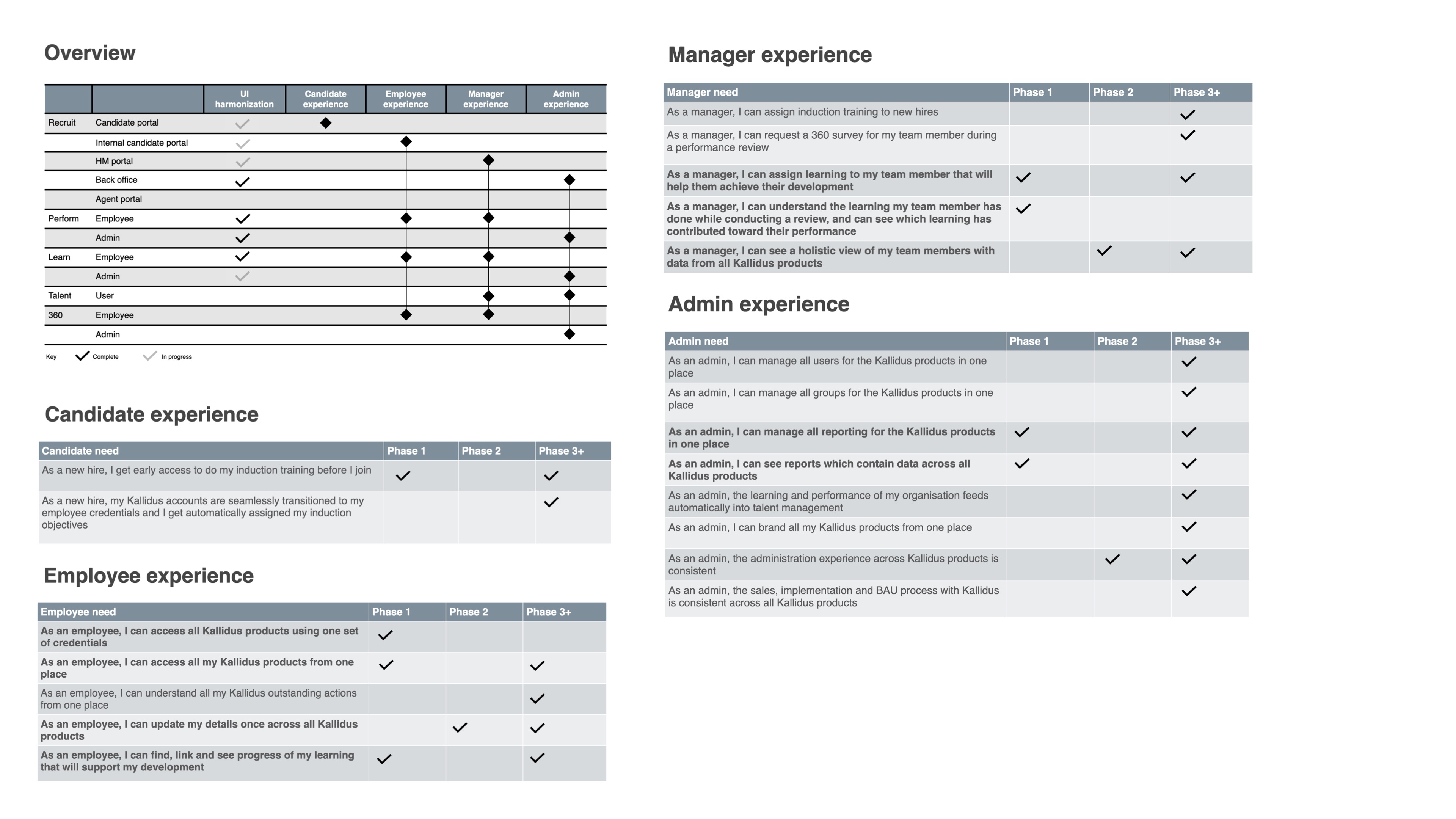
Phase 1 (February 2020)
Phase 1 integration work was centred around two of our main products - Learn and Perform - and the way these should work together to help develop the employee. The idea was that we could support employees with their personal development plans by allowing them to link it with relevant learning in their learning management system.
User research
Following a round of user research with both employees and managers within our customer base, we had an understanding of the user needs that we could map out in a user story map.
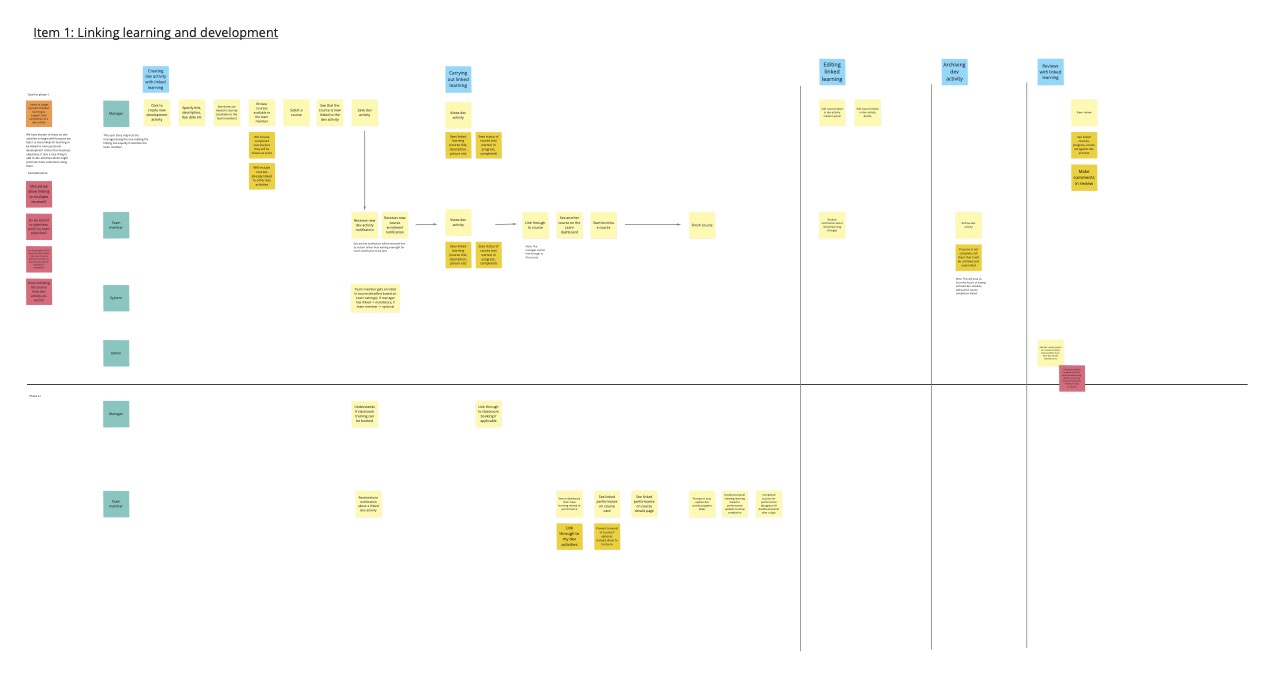
Design
Working through the user stories I started creating wireframes for each. I had testing sessions booked with customers, so I developed an interactive prototype of the designs that would help us test the journeys we had identified.
User testing
I conducted both moderated remote testing across both personas we were targeting. There were a few design considerations still unanswered from the testing so I also ran some unmoderated usability testing through usability hub to help us identify the best design solution for switching between each product. I used a navigation click test to do an A/B test of two possible design solutions. The result from these tests helped us identify the best option to move forward with.
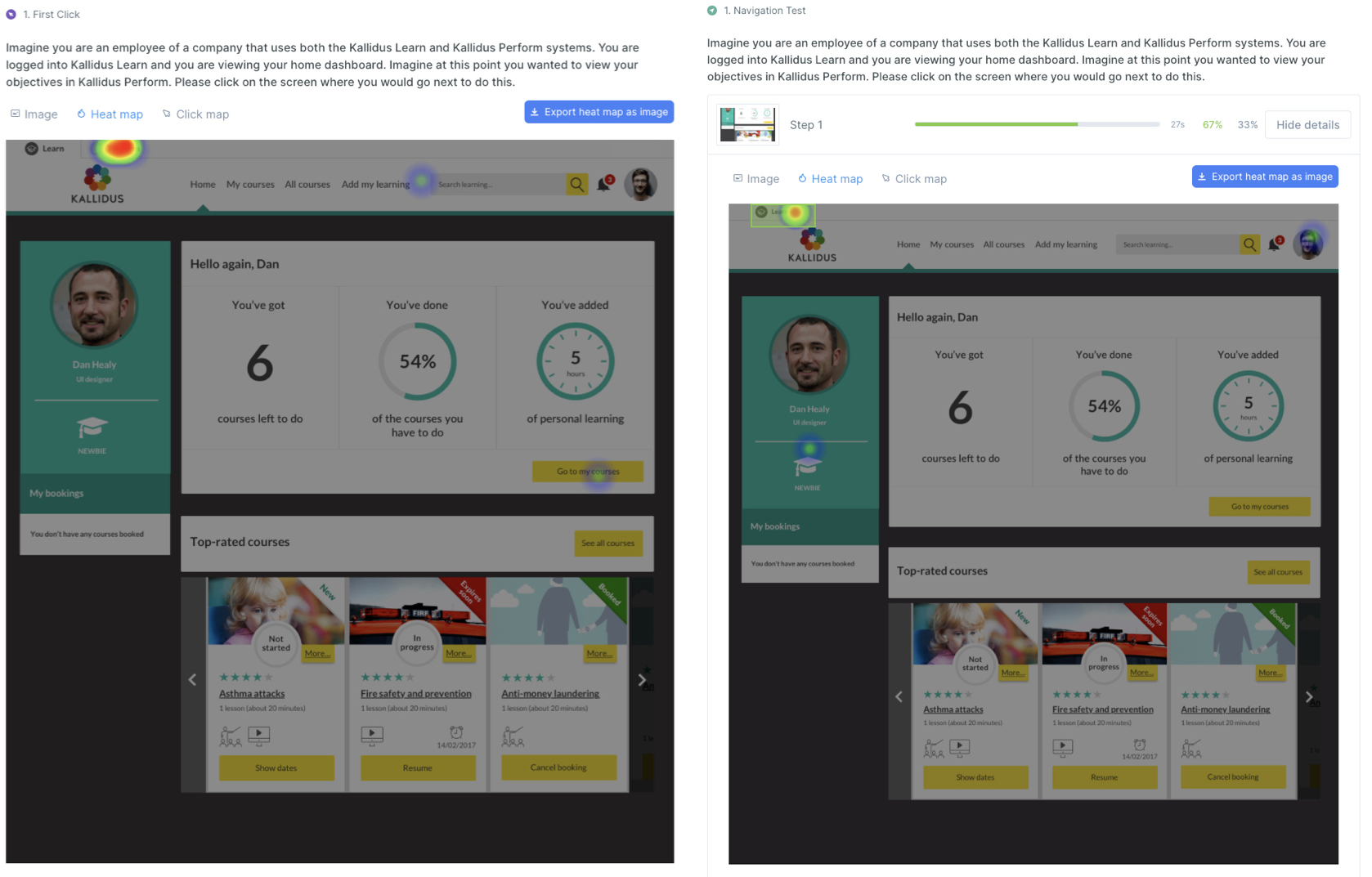
Final designs
Working alongside a UI designer we pulled together all final screens for the developers.
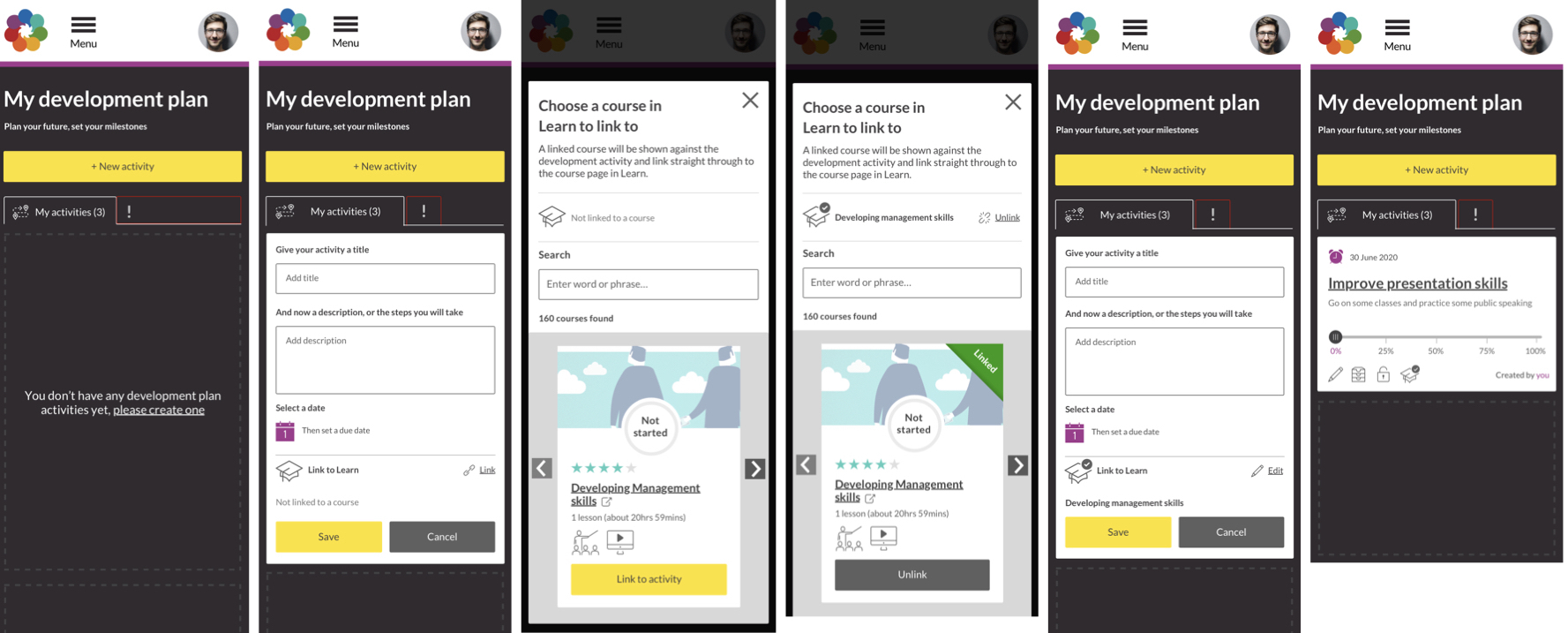
Phase 2 (July 2020)
I approached phase 2 by conducting a discovery project in the style of an extended design sprint to kick start the project.
User research
Although we had insight on the phase 2 areas from previous rounds of research, we wanted to make sure we had up to date opinions. We conducted a round of research with a set of customers, getting both administrator, manager and employee views.
I facilitated these session remotely, streamed via Lookback for my team to note take. The notes were then imported into our Miro board ready for affinity mapping to identify key themes.
The themes identified cemented the phase 2 user stories which we took forward into design.
Design
Since I was running an extended design sprint for this phase of work we ran design activities from the sprint book including crazy-8s, art gallery, storyboarding and prototyping.
User testing
Using our prototype we tested with our end users to gather feedback, identifying themes in the feedback to help inform future iterations of the designs.

Iteration
Off the back of the user testing we refined our designs and re-tested twice. This was based on observing some difficult navigating between suite-wide pages, and individual product pages, which was alleviated with better in product navigation using breadcrumbs.
We went through design again, refining our interactive prototype and taking it into usability testing with another set of customers.

Following the testing we were happy with usability of the designs. We started to them create final design assets for the developers including edge cases.
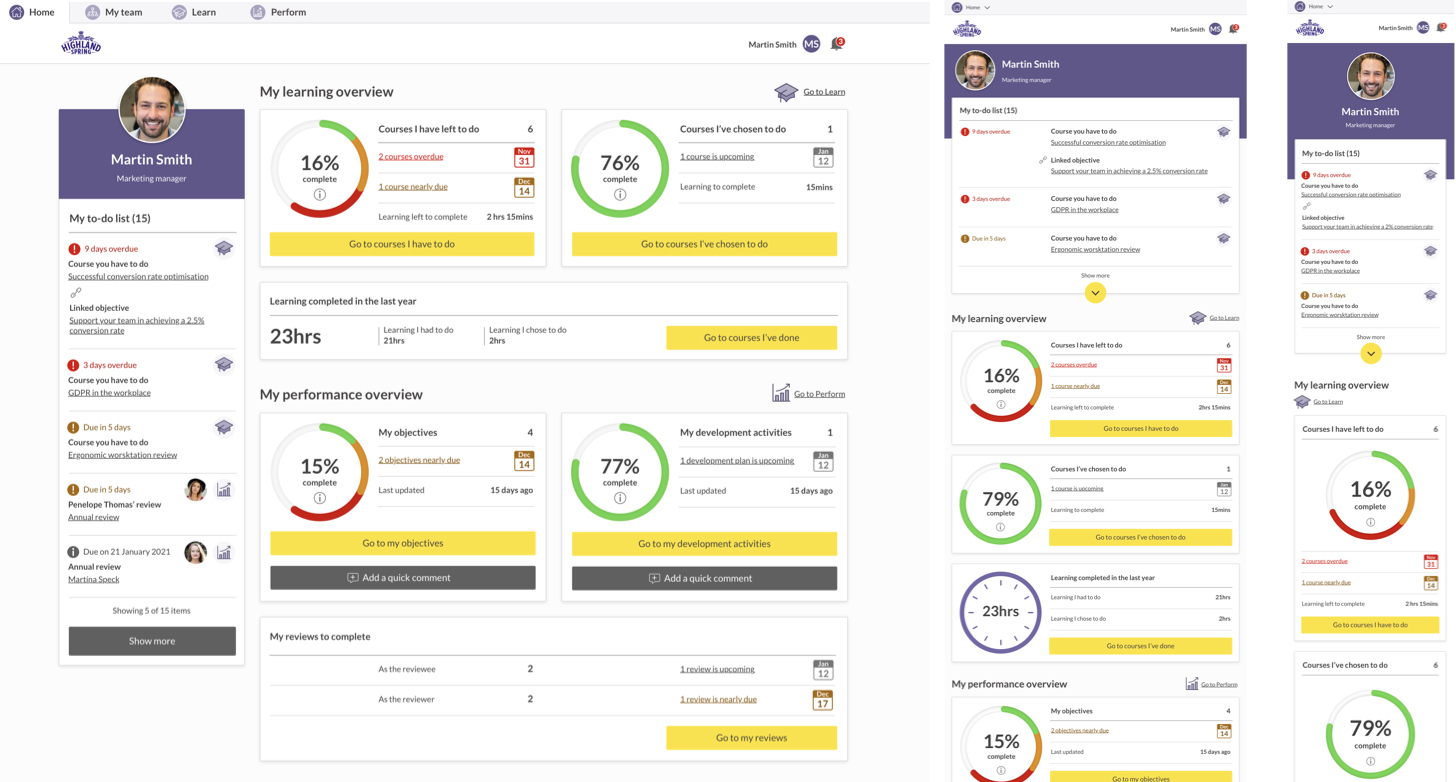
Conclusion
As this project has continued I have been pro-actively updating all stakeholders on the progress.